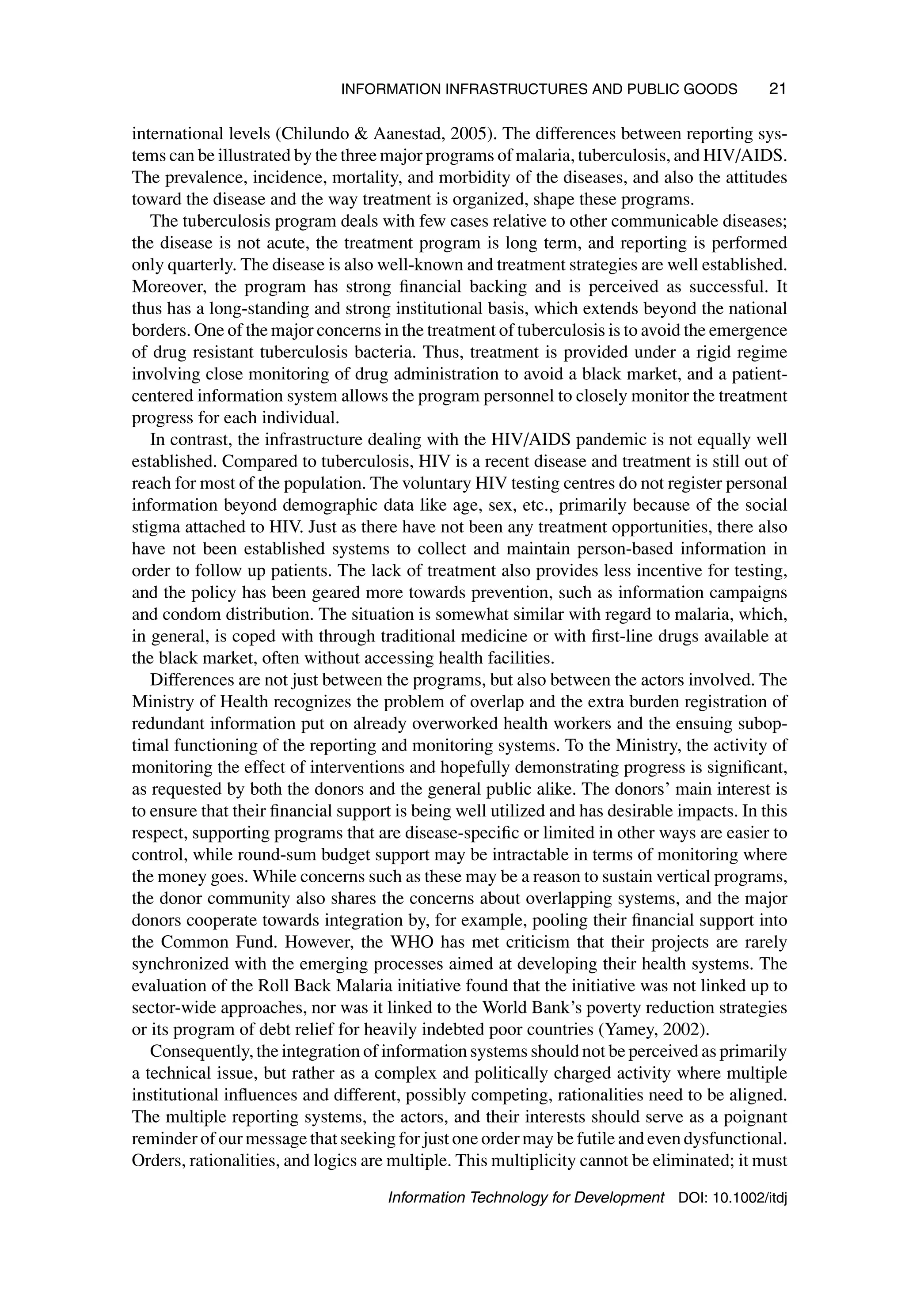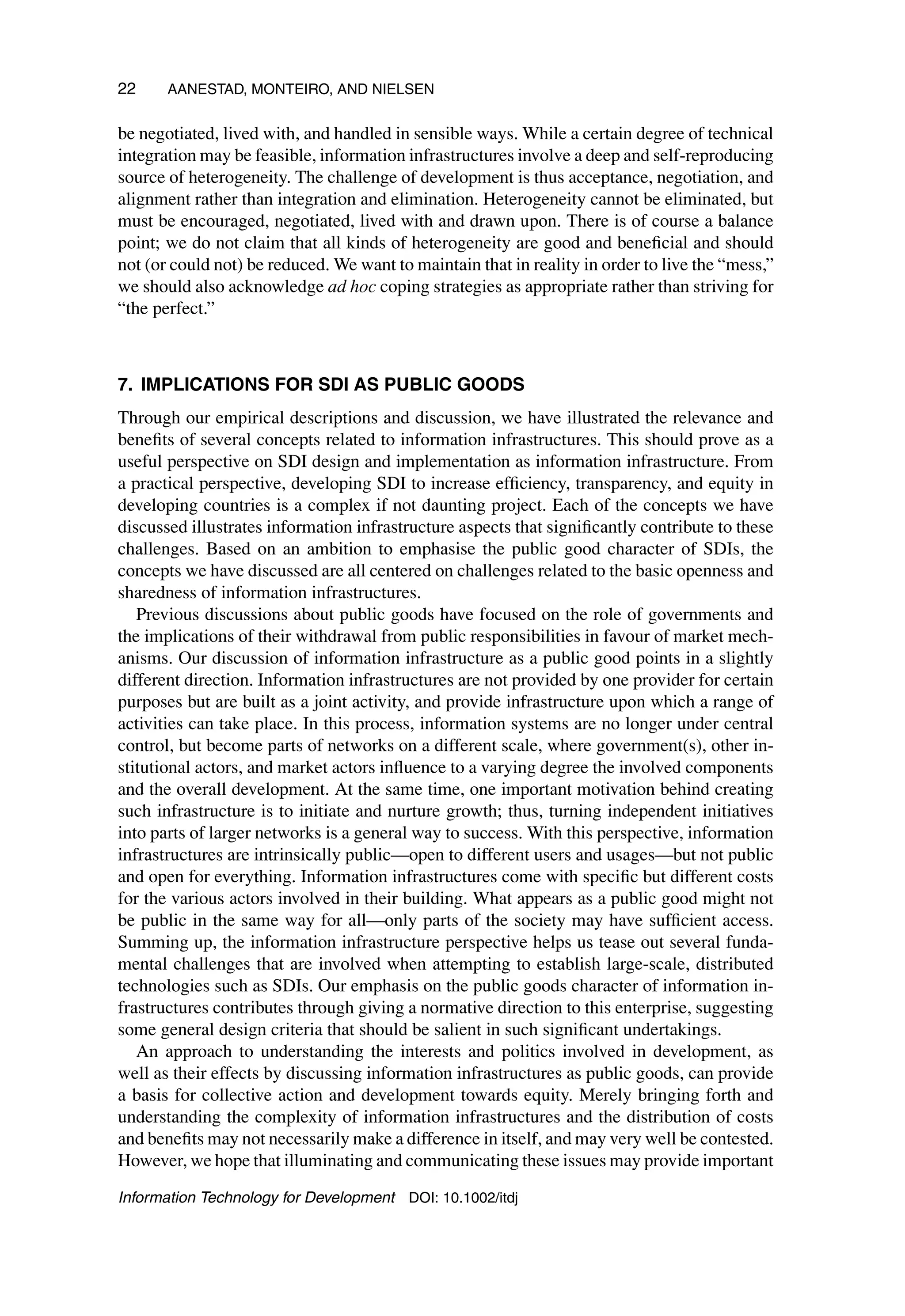This document discusses how insights from information infrastructure theory can help address challenges in developing Spatial Data Infrastructures (SDIs). It argues that SDIs should be viewed as public goods and information infrastructures, rather than standalone systems. Key concepts for understanding information infrastructures that are relevant for SDIs include: viewing them through a socio-technical lens; recognizing the importance of installed bases and path dependencies; understanding the "politics of representations"; and accepting their inherent "messiness". The document illustrates these concepts using examples from efforts to develop health SDIs and eradicate river blindness in West Africa.
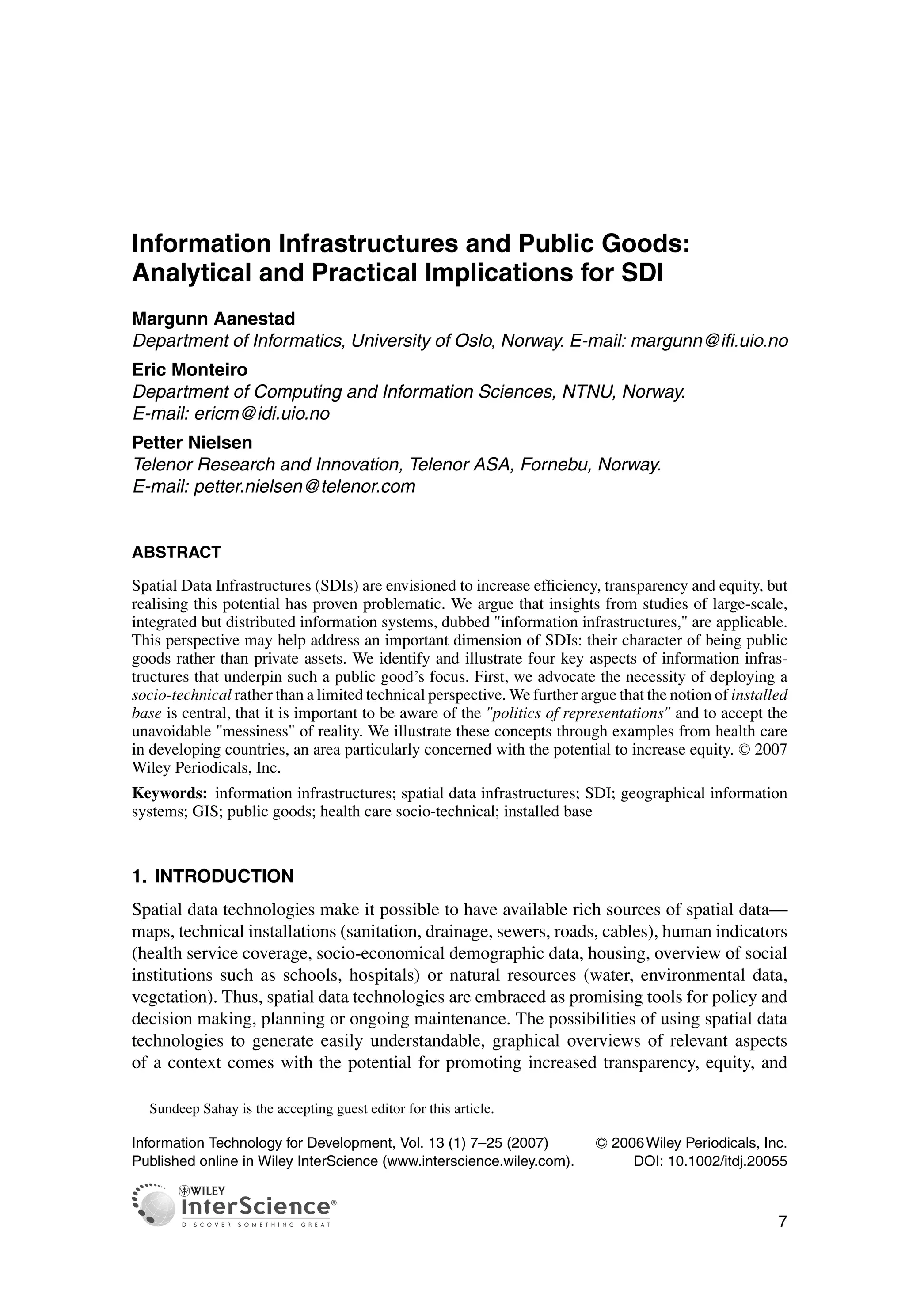
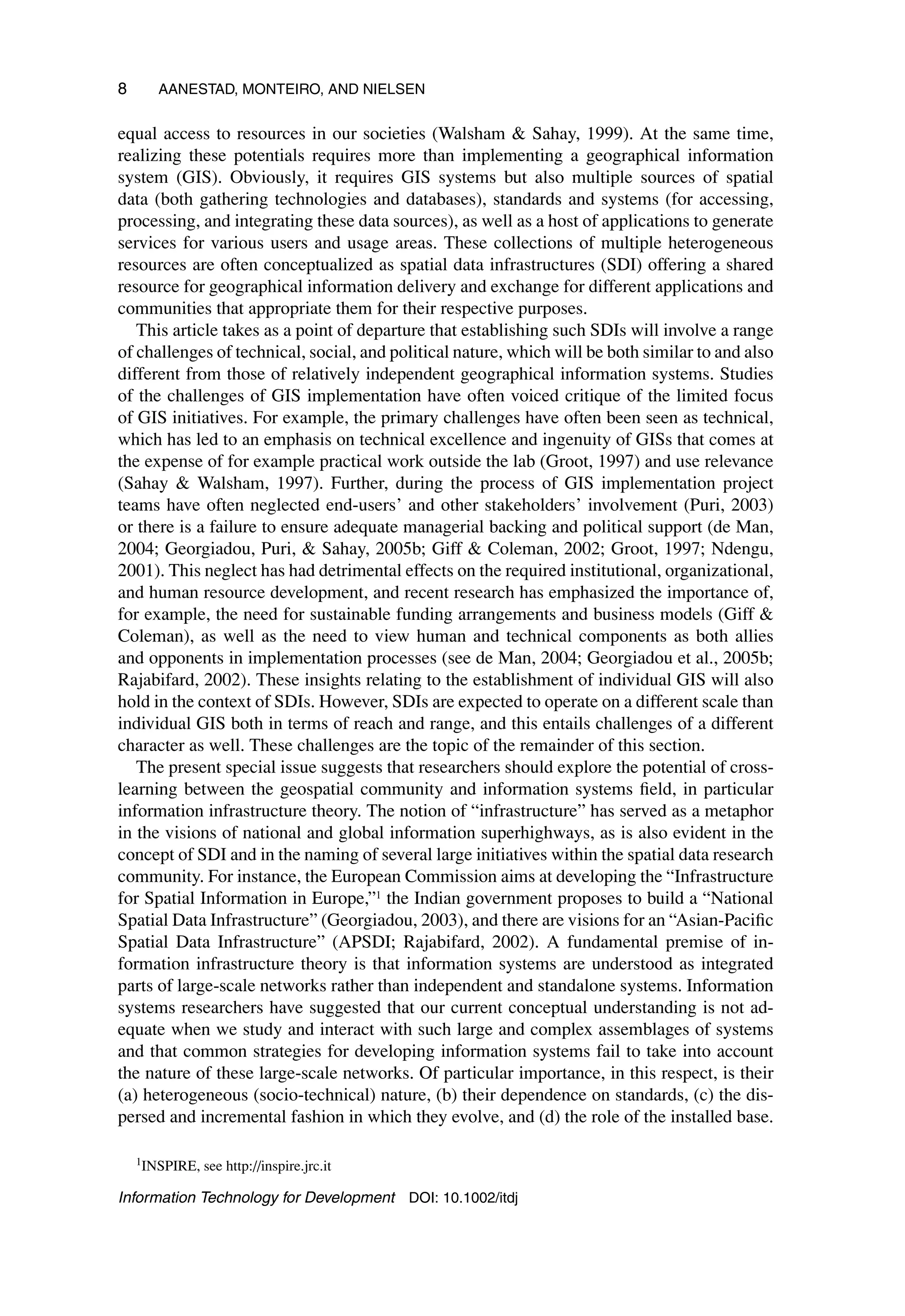
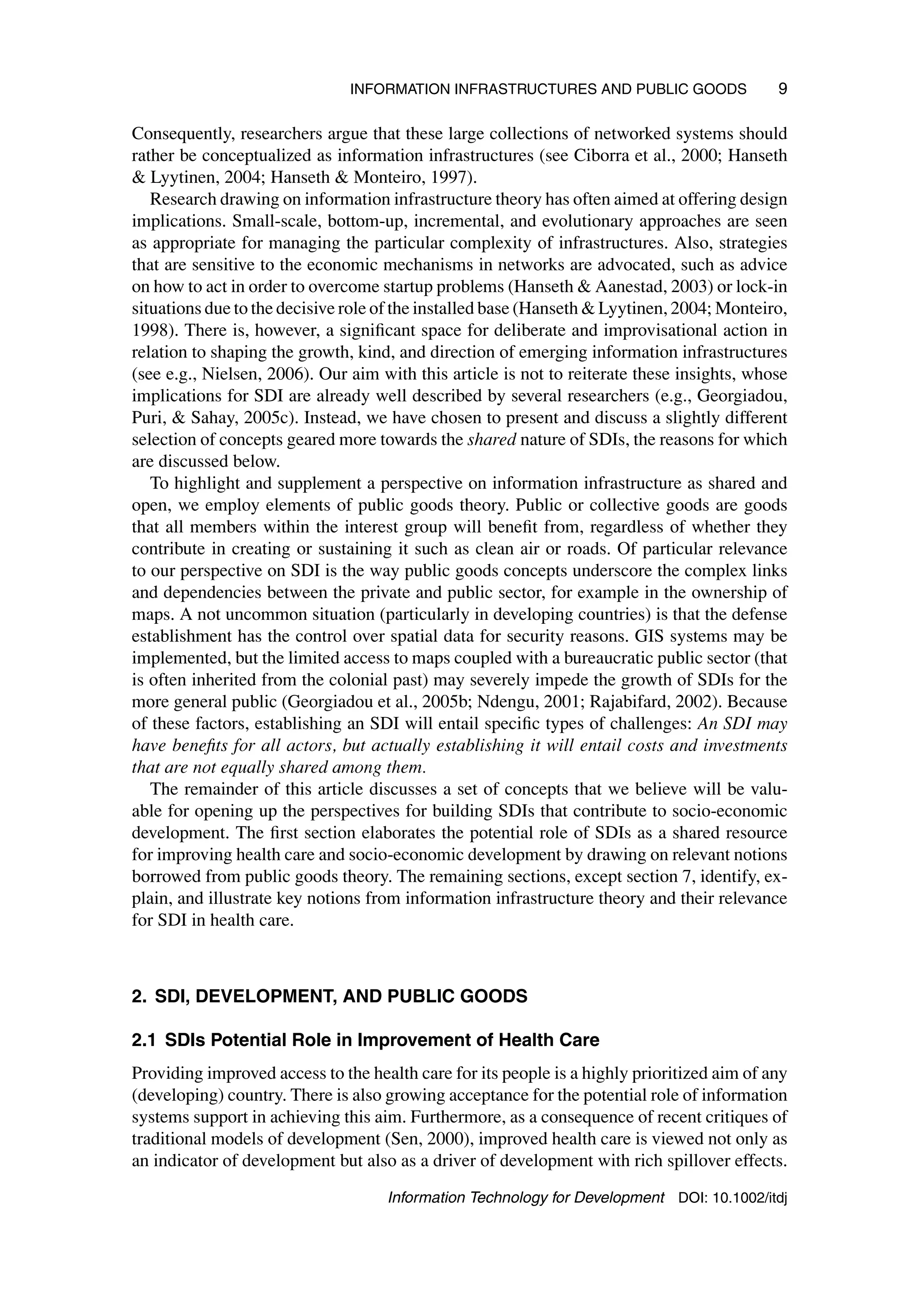

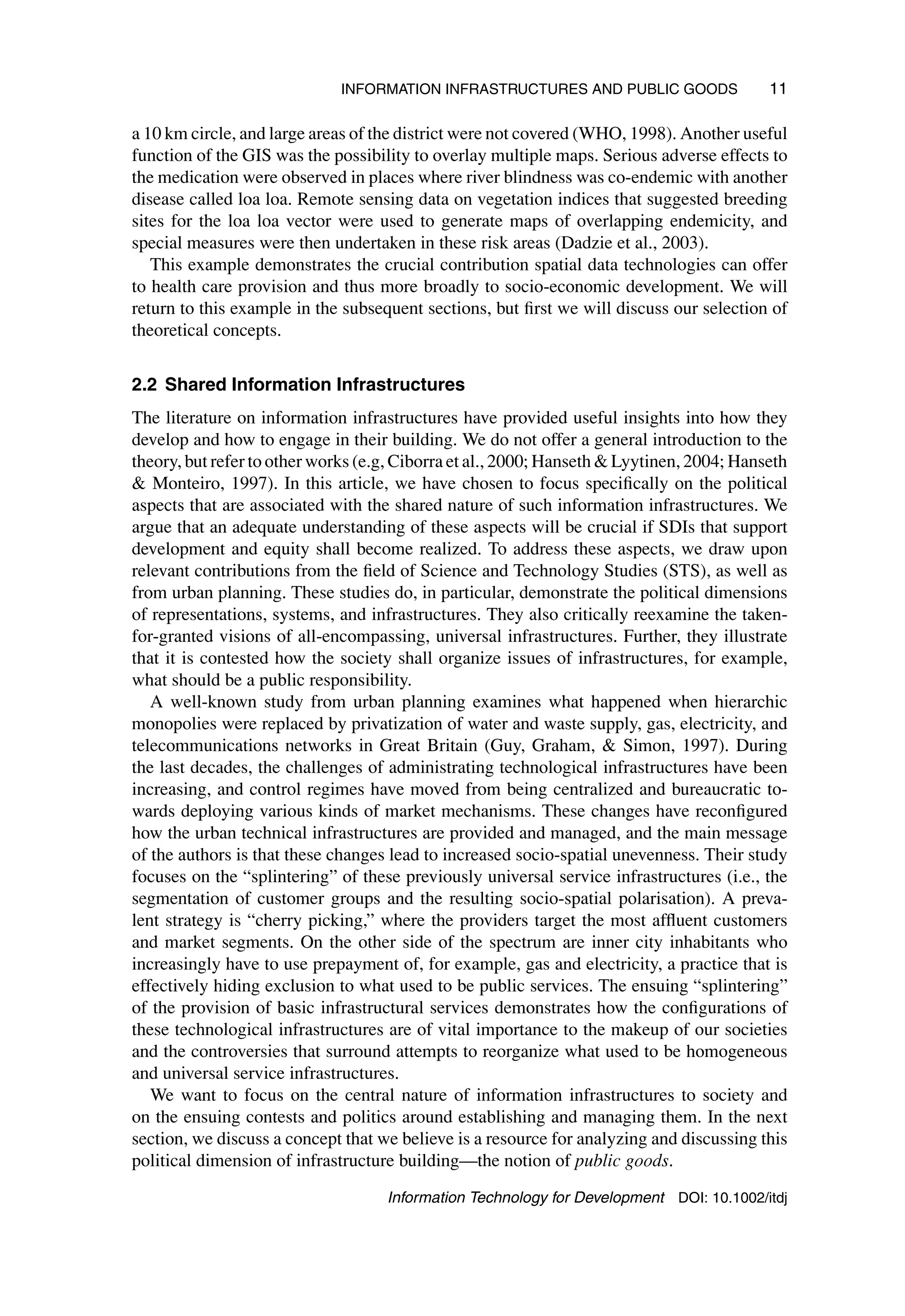
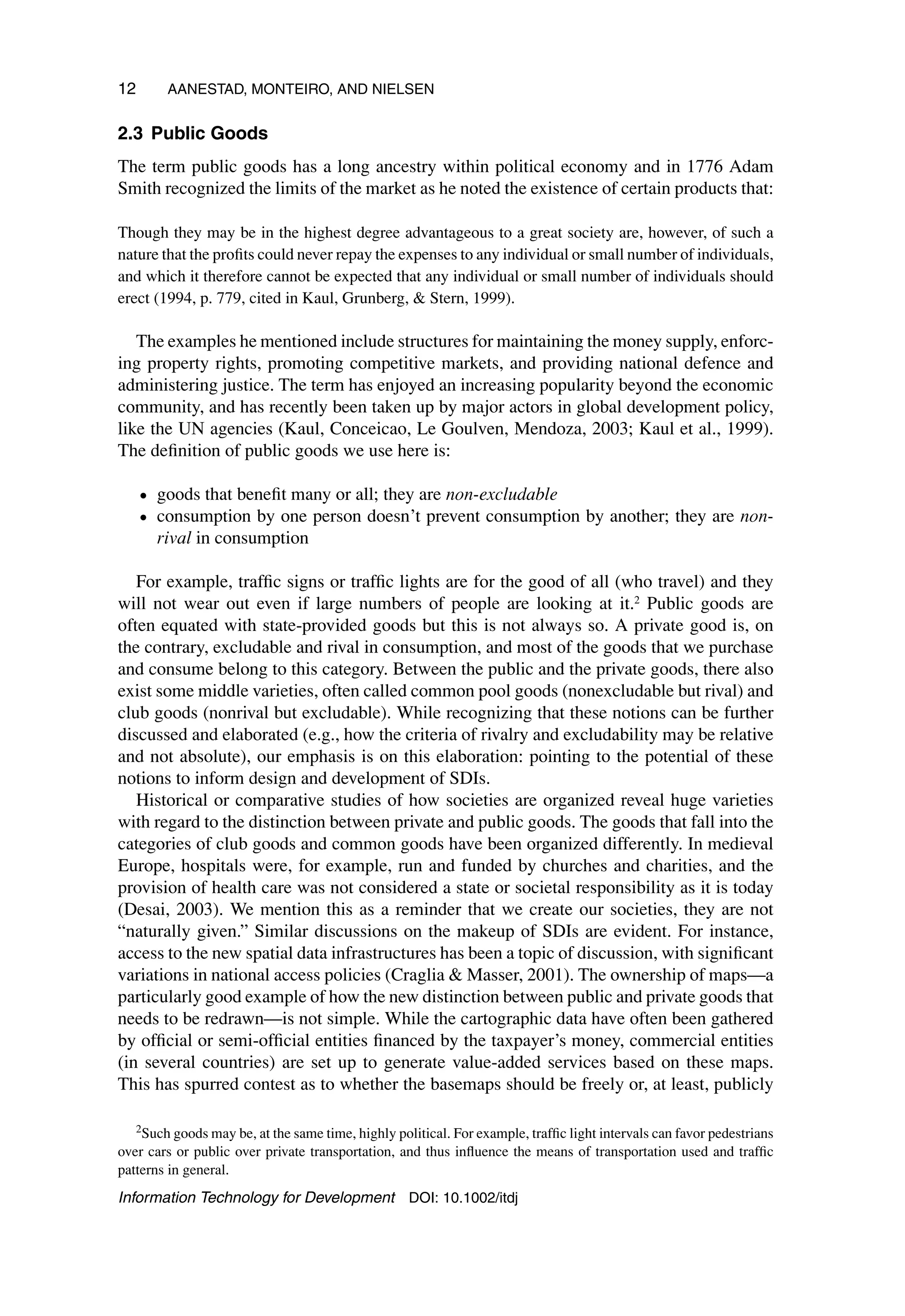
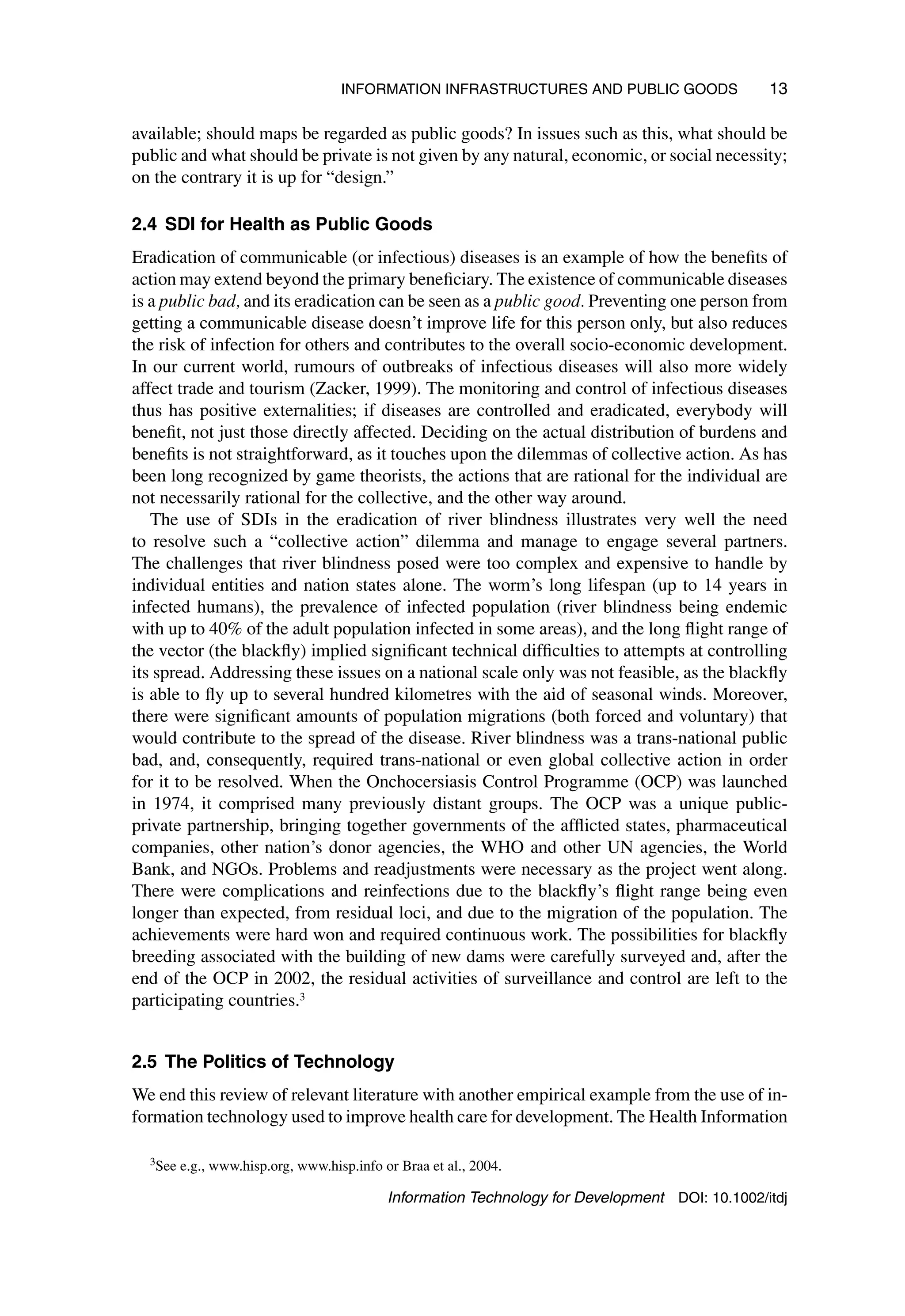
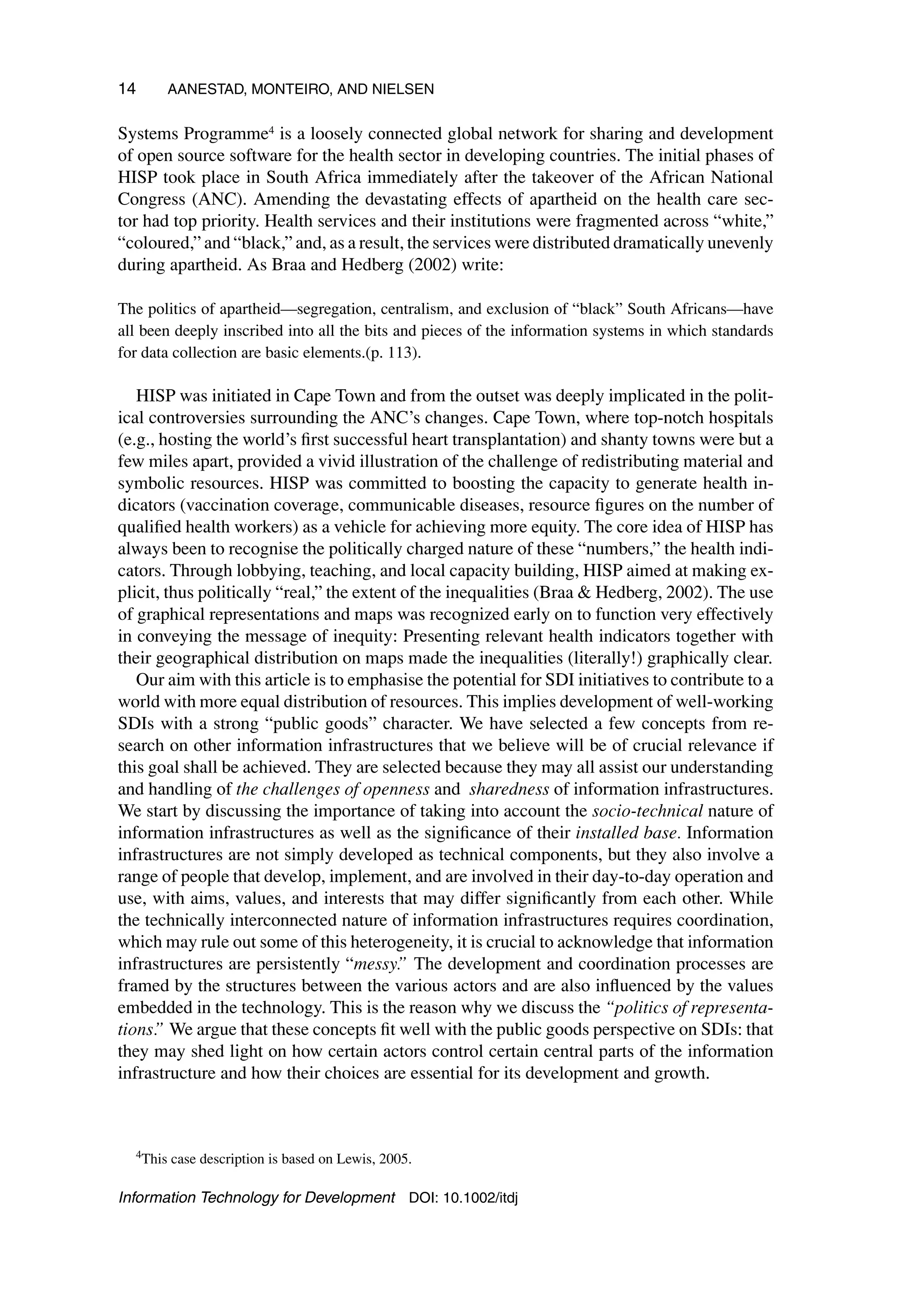


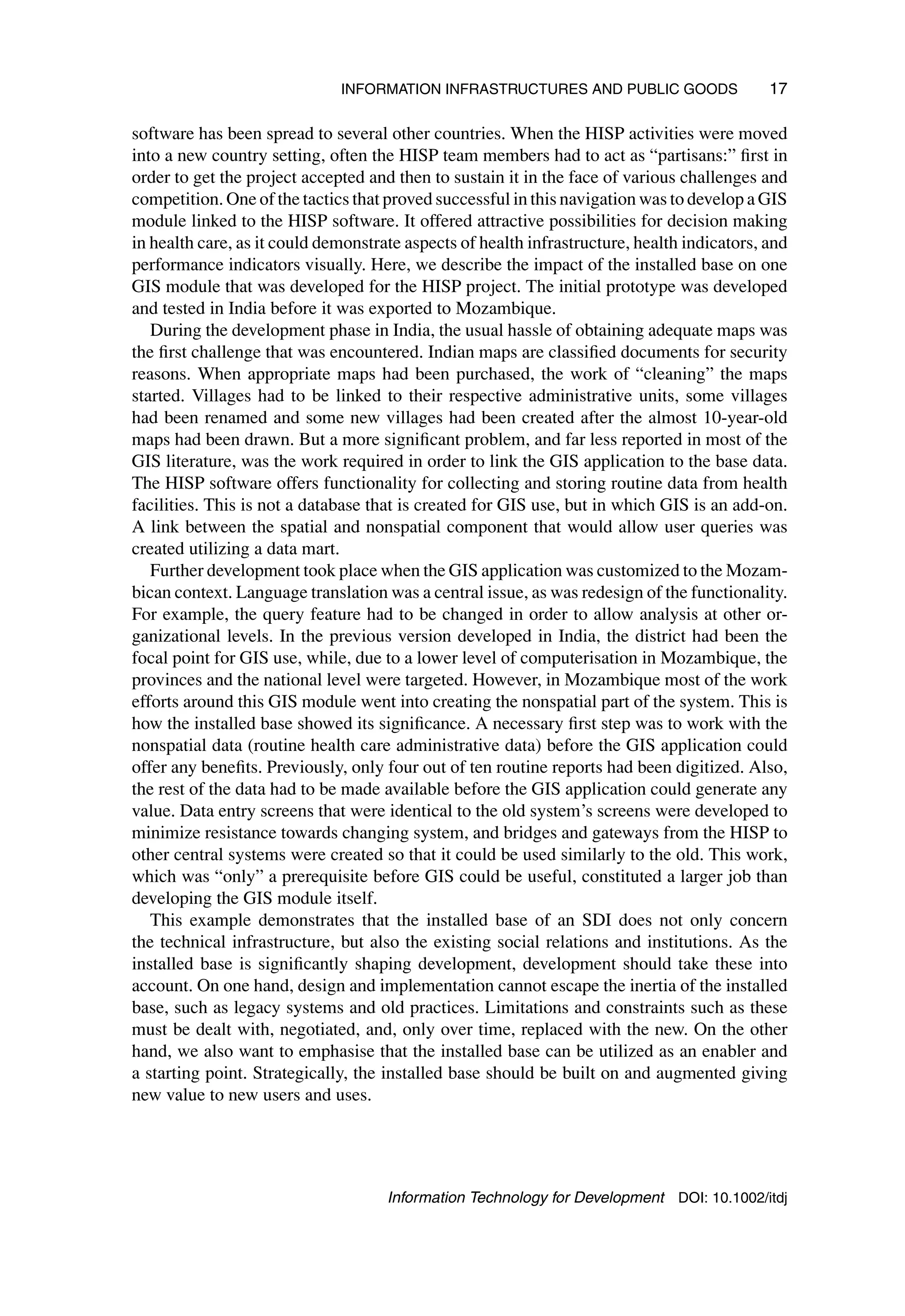
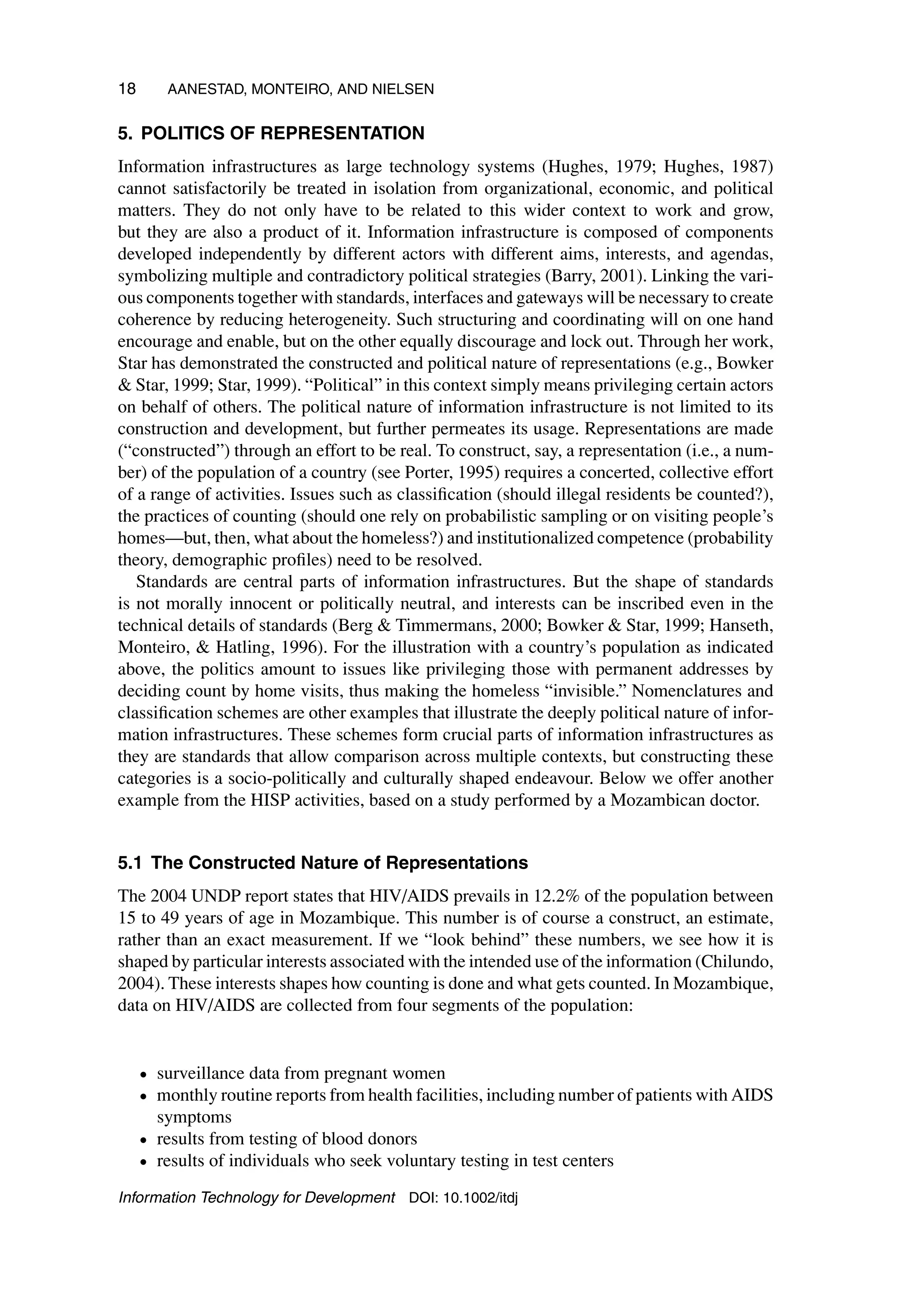
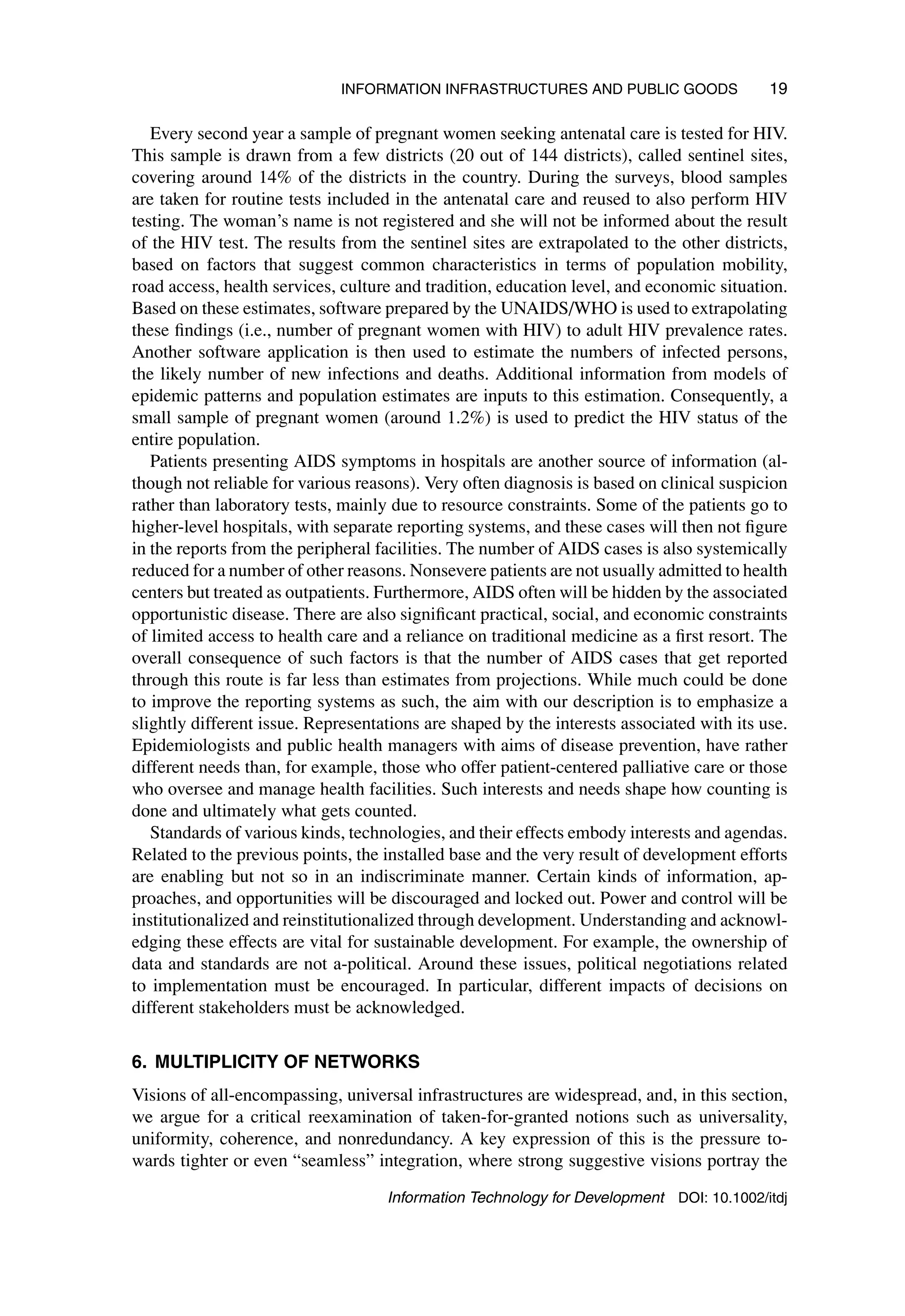
![20 AANESTAD, MONTEIRO, AND NIELSEN
benefits of tightly integrating currently dispersed, semiautonomous systems and modules
(Monteiro, 2003). Yet, the actual realization of these visions of tightly integrated, universal
infrastructures remains to be seen. We want to question the very ambition of these visions:
What if they are not just difficult to achieve but inherently unattainable?
Several studies from the field of science and technology highlight the essential multiplic-
ity of networks and focus on how ordering efforts does not eliminate but relocate disorder;
order for one in one place is simultaneously disorder for another in another place. As Berg
and Timmermans (2000) point out:
[T]hese orders do not emerge out of (and thereby replace) a pre-existing disorder. Rather, with the
production of an order, a corresponding disorder comes into being ... The order and its disorder, we
argue, are engaged in a spiraling relationship–they need and embody each other (p. 6–37).
Due to the multiplicity and complexity of the underlying networks, the very ordering
efforts in themselves may produce the disorder. John Law (2003) underscores the ultimately
dysfunctional nature of the ambition of full integration:
So what’s the argument here? The answer is: It’s an argument about imperfection ... that there
are always many imperfections. And to make perfection in one place (assuming such a thing was
possible) would be to risk much greater imperfection in other locations ... The argument is that
entropy is chronic ... Some parts of the system will dissolve. (p. 11)
From these studies, we may gain the insight that “control-oriented” strategies are often
unworkable related to complex systems (either of practical or of political reasons). Attempts
to intervene and change may produce unexpected consequences; attempts to impose order
in a collection of information systems through integration of multiple networks or standard-
ization may relocate or generate only new disorder (Hanseth, Jacucci, Grisot, Aanestad,
2006). Studies such as these expose the naivety of efforts of integrating the comprehensive
and dynamically shifting configurations of information systems. Integration, as a means to
overcome a deep and self-reproducing source of heterogeneity, is unattainable (in a strict
sense) given such a perspective. This has obvious, yet largely uncharted, implications for
management and control of information systems development processes through the com-
plexities and risks involved. In the following section, we provide another example of such
multiplicity and diversity of information systems from the health sector of Mozambique.
6.1 A “Spaghetti” of Systems
One illuminating example of the multiplicity of networks is the health care information sys-
tems in Mozambique. Mozambique’s aid dependence is extremely high, and it remains the
largest single recipient of foreign assistance in Africa (Chilundo, 2004). This has resulted
in a strong presence of donor agencies supporting the weakly developed national structures
for health planning and management. Existing in parallel with government structures, there
are multiple reporting systems belonging to vertical, disease-specific programs such as
malaria, tuberculosis, leprosy, and HIV/AIDS. There is a general agreement that these sys-
tems overlap, but actually attempting to integrate these systems is complex and politically
charged. The information systems are different in non-arbitrary ways: in relation to their
history, how they are shaped by the characteristics of the problems (disease) addressed,
and how they are embedded into different institutional settings at local, national, and
Information Technology for Development DOI: 10.1002/itdj](https://image.slidesharecdn.com/informationinfrastructuresandpublicg-220910212904-153eedf3/75/Information_infrastructures_and_public_g-pdf-14-2048.jpg)
